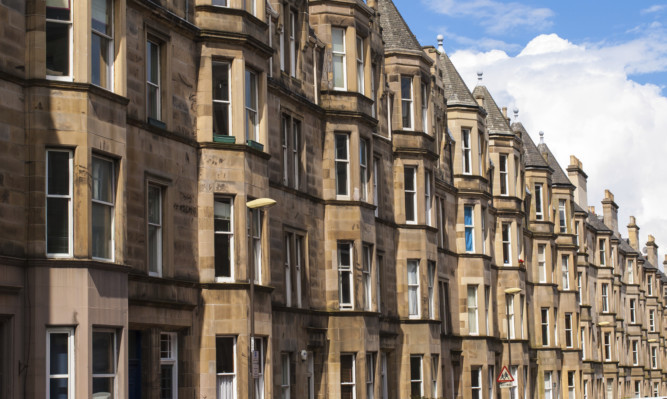Rents in Scotland are rising at a slower rate than those in England and Wales, according to new analysis.
Your Move’s latest buy-to-let index found that rents in Scotland have risen 2.1% in the year to February, adding around £11 to the average cost of a rented property.
But south of the border, rents have increased by 3.3% over the same 12 months.
Your Move said the Scottish figure also marks a slowdown from 2.3% in the 12 months to January.
And rent growth is said to have stagnated on a monthly basis, with rents showing no change since the start of the year.
Currently, the average residential rent in Scotland is £548 per month.
The figures come just days after new laws were passed at Holyrood aimed at overhauling the private rented housing sector.
Housing minister Margaret Burgess said the Private Housing (Tenancies) (Scotland) Bill – which MSPs backed by 84 to 14 – would “provide a step change in improving the quality of private renting”.
The Bill will allow tenants to challenge excessive rent rises and abolish the “no-faults” ground for repossession, which allows landlords to take back their property once an initial fixed period has expired. Instead, there will be 18 separate grounds on which a landlord can seek to take back their property, with tenants able to take landlords to a tribunal if they are unhappy.
Brian Moran, lettings director at Your Move Scotland, said: “It’s ironic that Scotland is witnessing one of the biggest government interventions into the private rented sector, at a time when rents have been moving at a much slower pace than in other parts of the UK.
“Scottish rents are still making incremental upwards progress – but crucially, against a bedrock of stronger tenant finances. Like in any market, affordability is a fundamental check on prices. Rental arrears are a great benchmark of affordability in the market, and their frequency is falling.
“But the passing of the Private Tenancies Bill last week signals a paradigm shift in the private rented sector in Scotland, introducing a new artificial influence in the market, aside from regional supply and demand. Intervention in the market has had negative side effects in the past – noticeably the abolition of tenancy fees in 2012 – and it will be interesting to see how landlords recuperate and recover from this regulatory blow.”
Regional figures show that, in the year to February, three of five Scottish regions have recorded positive growth in rents.
Edinburgh and the Lothians had the strongest year-on-year rise in rents, at 7.7%, taking average monthly rents in the region to a new peak of £644.
Rents in the South of Scotland stand at a high of £515 per month, up 5.3% from £498 a year ago.
In the Highlands and Islands, rents are now 2.5% higher than a year ago, standing at an average of £554.
Rents were found to have fallen In the East of Scotland and Glasgow and Clyde areas compared to the previous year.
Meanwhile, the index also noted that the proportion of late rent in Scotland has dropped to 10.9% of all rent due in the month – the lowest since July 2015.
